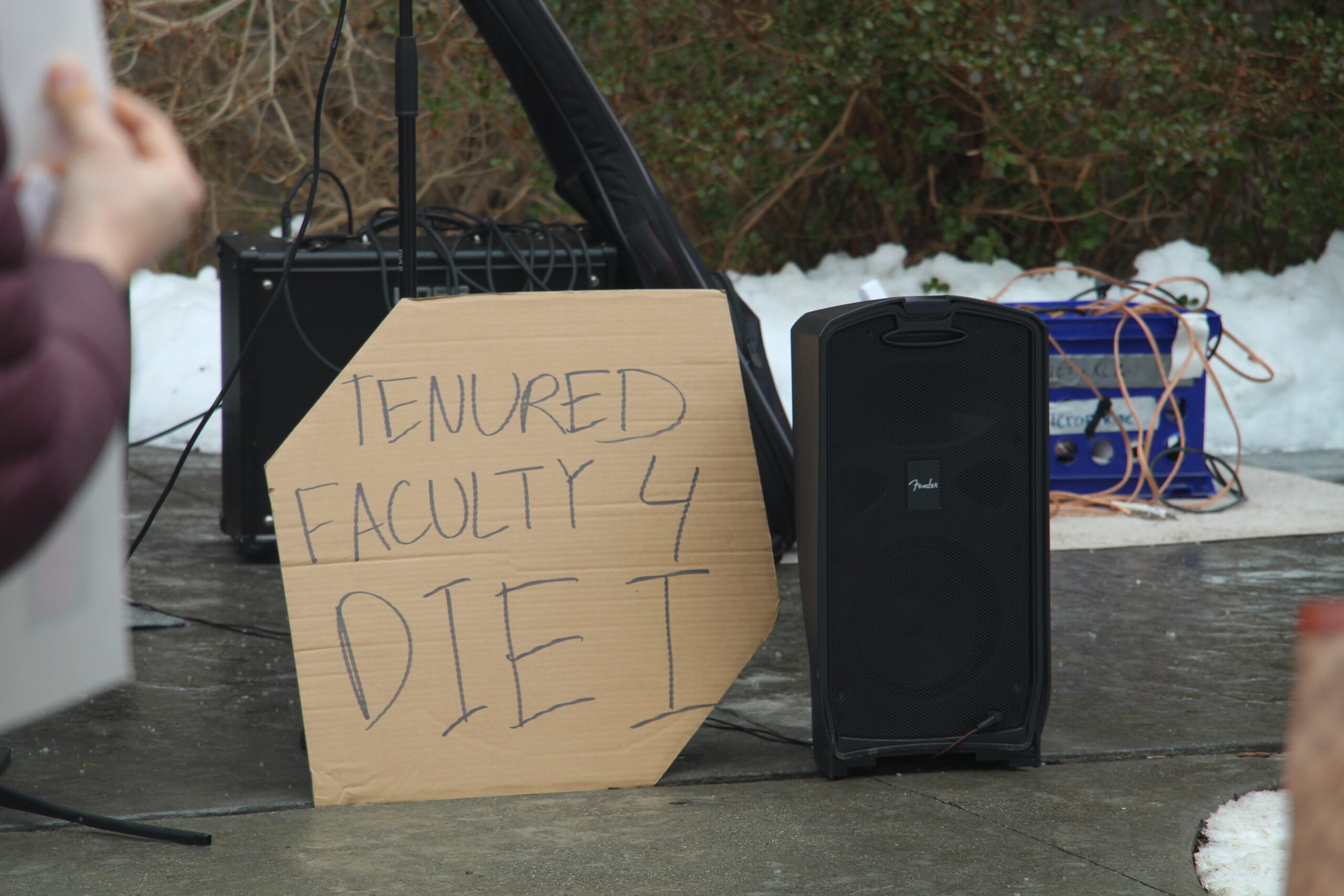When I sat down for my first creative writing class, I did not expect my sixty two year old professor’s former name to have been Rain when she was part of a radical lesbian commune; or for her to walk into class with dried blood all over her knuckles, only to tell us: “My doctor said I should probably stop fighting…but I can’t.”
After handing in a story with a few punctuation errors, she began slamming my paper on the desk, yelling to the class “Do I look like a word janitor to you? Am I here to clean up after you? No. Then don’t hand me your garbage.” To understand that I needed to be torn down first, and then cared for, is just one of many times Blanche was able to see into a person deeply, doing what she thought was right with no reservations. It is this tremendous humanity that allowed her to successfully tell the story of Susan Smith in her article for the Village Voice, and her Endowed Chair Lecture.
Professor Boyd identifies herself with the generation of Tom Wolfe’s New Journalism, which she now dubs “Narrative Nonfiction,” where many journalists include their own experiences as part of the story and use fiction techniques. The lecture was Blanche’s crash course in narrative non-fiction, which she believed to have been pioneered after Vietnam. “After seeing children on fire with napalm while eating dinner, what was I going to make up that would match the truth? Nothing.”
Fifteen years ago, Blanche wrote an in-depth investigative report for the Village Voice on the case of Susan Smith, a complex story of a mother drowning her own children while they were in the backseat of her car, and then telling the police that a black man had stolen her car.
Professor Boyd began her talk with the question of audience, of how to present the story of Susan Smith to a wide range of people. Seeing that her children, her mother in law, her students and the English department were present, the question of audience could not have been more appropriate.
Blanche explained that while she didn’t review music, she approached events like rock n’ roll. For Blanche connections aren’t metaphors, but serve as literal devices that illuminate each other. During the lecture, Blanche discussed her essay comparing sky diving, Kundalini Yoga and stock car racing.
“The point of Kundalini Yoga is to channel the light of god up your spine. The Darlington 500 is the redneck version of Kundalini Yoga, sending energy up your body by yelling at race cars” and that “skydiving and stock car racing are all about falling and noise.”
But the main focus of the talk was Susan Smith, and how to successfully tell her story. According to Blanche, “What happened to Susan Smith is more interesting than Susan Smith,” so an explanation of her environment and the circumstances leading up to the murder were just as important as describing the woman herself. Blanche then proceeded to explain the four techniques that make the form successful, and how each helped to tell the case of Susan Smith.
1. The scene as a basic unit of construction. What scenes do you use? How long should they go on for? How do you introduce them? How do you exit them? When Blanche wrote about Susan Smith, she knew that explaining the town she lived in was just as important as writing about the lake, where locals weren’t sure if it was okay to fish in the lake since two children died in it.
2. Dialogue. Good stories revolve around a few pieces of dialogue that reveal more meaningful information. Which pieces of dialogue do you choose to highlight character? On Mother’s Day when Blanche drove her mother to the same lake Smith drowned her children in, she turned to her and asked, “Why didn’t you drown us?”
3. Status details, details that matter. “If it doesn’t matter, it can’t go in. No matter how clever, every detail has to carry weight.” It’s easy to imagine Susan Smith as a monster, but can you imagine an honors student that was voted “friendliest” in high school drowning her own kids? Or while driving through South Carolina, Blanche and her mother spotted a church sign that read, “A mother’s love is like God’s love.” Neither of them commented.
4. Messing with P.O.V. If you enter the mind of someone else, then what you look at alters. Where you stand changes everything. Since everything is simply someone’s point of view, there is no objectivity, only fairness. To consider the point of view that the same people who testified on her behalf were the same people who just lost two children.
With a demonstration of the techniques, Blanche challenged the audience to look beyond the event of the drowning and trial to the larger story, and what it says about human nature. That a memory of her mother being terrified when a bee landed on her brother’s forehead is as much part of the story as the murder. That most mothers are overwhelmed with the desire to protect their children from a bee, yet Susan Smith willingly killed hers.
Blanche asked the question that was on everyone’s minds: “Why did Susan Smith kill her children? She was molested by her stepfather since she was 15? She was going to lose her job? The love of her life found out she slept with his father? Sure.” But the final question Blanche asked challenged everyone to think beyond the story as simply the murder and trial, but as an intricate series of events where every detail is important. “But why Susan Smith killed her children and why Susan Smith killed her children at 9 PM on a Tuesday are two very different questions.”










I would love to see a copy of this article with Boyd’s editing marks.